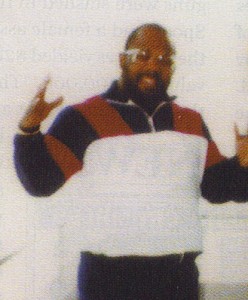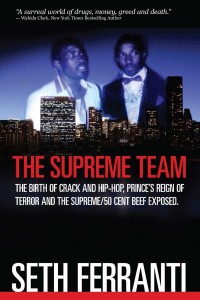 Rivalries had existed between the loosely organized hustlers of Hollis and South Jamaica, but the balance of power had never tipped in any one direction until 1981 when ex-con and former Seven Crowns’ member Fat Cat set up shop on 150th Street near 107th Avenue. The block was ideal for drug dealing as it forked off from Sutphin Boulevard, making it easier to conduct deals with a sense of privacy, and Fat Cat’s heroin and cocaine business took off almost immediately. The 150th Street and 107th Avenue site was also just 10 blocks away from the Corley family’s Forty Projects base. Hustlers from every part of the Southside were shocked by Fat Cat’s boldness. It didn’t help that Cat wasn’t a local since he was raised in the Ozone Park section of Queens, nor that his background was in armed robbery, not drugs. Still Fat Cat did what Fat Cat wanted. Word of the bustling drug trade on 150th Street made it a magnet for both up and coming entrepreneurs like the Supreme Team and seasoned tough guys like Fat Cat. “Cat was down there, other crews,” Bing says. “It was where niggas hustled at. It was the turf of Seven Crowns.” They called it the block, 150th Street and Sutphin Boulevard.
Rivalries had existed between the loosely organized hustlers of Hollis and South Jamaica, but the balance of power had never tipped in any one direction until 1981 when ex-con and former Seven Crowns’ member Fat Cat set up shop on 150th Street near 107th Avenue. The block was ideal for drug dealing as it forked off from Sutphin Boulevard, making it easier to conduct deals with a sense of privacy, and Fat Cat’s heroin and cocaine business took off almost immediately. The 150th Street and 107th Avenue site was also just 10 blocks away from the Corley family’s Forty Projects base. Hustlers from every part of the Southside were shocked by Fat Cat’s boldness. It didn’t help that Cat wasn’t a local since he was raised in the Ozone Park section of Queens, nor that his background was in armed robbery, not drugs. Still Fat Cat did what Fat Cat wanted. Word of the bustling drug trade on 150th Street made it a magnet for both up and coming entrepreneurs like the Supreme Team and seasoned tough guys like Fat Cat. “Cat was down there, other crews,” Bing says. “It was where niggas hustled at. It was the turf of Seven Crowns.” They called it the block, 150th Street and Sutphin Boulevard.
The Southside of Queens began making history in the late 1970s and 1980s as their street legends and urban gangsters gained a measure of fame. Ronnie Bumps, Cornbread, Hymee, Danny, Pretty Tony, Wall Corley, and Fat Cat were the pioneers. They played a big role in the way things were. “The Southside mentality. That stigma of the Southside just imposes its will on the people who live there,” Lance said. That mentality was shaped by the gangsters in power, but it was taken public by hip-hop. Rap culture blew Queens up, and the force behind hip-hop was the hustlers on the block. The music brought pride and enjoyment to the youth, but the gangsters gave them that “get money” mentality. As dudes on the street tried to one up each other, their swagger became more outrageous, and the flashy materialism of bling-bling would come to dominate.
About 62 percent of the population in Queens was black while 18.5 percent was Hispanic. The median income was about $35,000. With stable homes, the kids had time to explore hip-hop, and the freedom to try getting money. Hip-hop and hustling became the two biggest past times in the borough. The youth of Queens became enamored with hip-hop and the dope game. It was the best of both worlds. This contrast mirrored their environment. “The neighborhood is like a residential neighborhood but these projects are right there,” a Supreme Team member says. “The elevated train, Long Island Railroad, a train track, went right by the projects.”
This is an excerpt from The Supreme Team. Also check out Seth’s upcoming book on Fat Cat.




1 Comment
My niggaz supreme magnetic from fort green